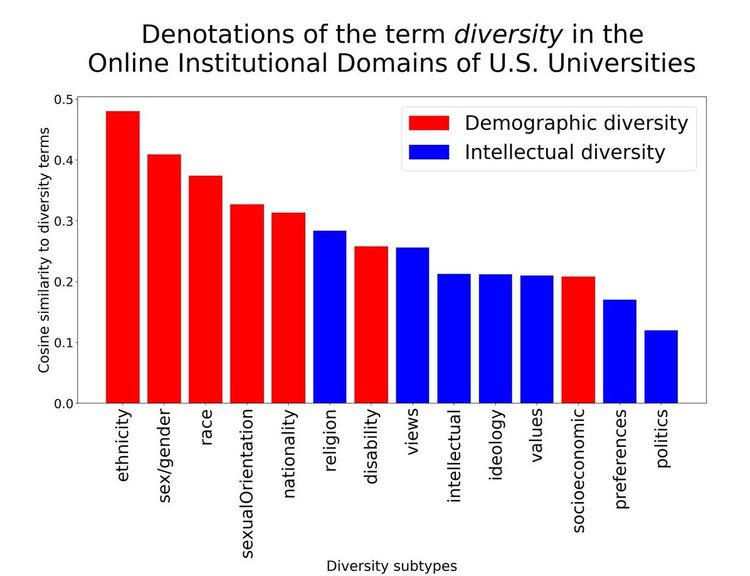
Demographic Diversity vs. Intellectual Diversity in Colleges’ Self-Promotional Literature
By Steve Sailer
06/16/2019

I wrote about David Rozado’s analysis of trends in New York Times verbiage for Taki’s Magazine this week. Now, Rozado has posted a new paper on how universities’ advertise their commitment to diversity: Do they mean “demographic diversity” (e.g., black vs. white) or “intellectual diversity” (e.g., lumper vs. splitter)?
A quantitative analysis of cosine similarities between word vectors derived from the corpus of text retrieved from universities online institutional profiles shows that the diversity concept is much closer to demographic operationalisations of diversity such as race, gender, ethnicity or nationality than to intellectual ones such as viewpoints, values, beliefs or political orientation. That is, the universities studied tend to use the word diversity predominantly in its demographic denotation to refer to variety of external appearance instead of to variety of mental phenomena. This is significant in light of the severe lack of ideological diversity in universities across the US, with the vast majority of faculty leaning left of center. Universities emphasis on the usage of the term diversity to denote demographic subtypes of diversity could be indicative of a majority power structure in the Academy which tries to hinder the fostering of viewpoint diversity by steering diversity efforts towards demographic interpretations of the word. At the very least, the results of this work suggest that universities, as judged from the way they use language in their own online institutional profiles, prioritize demographic types of diversity around variety of external appearance cues over intellectual heterogeneity.
Rozado has put together a website to let you try out your own tests on his database.
